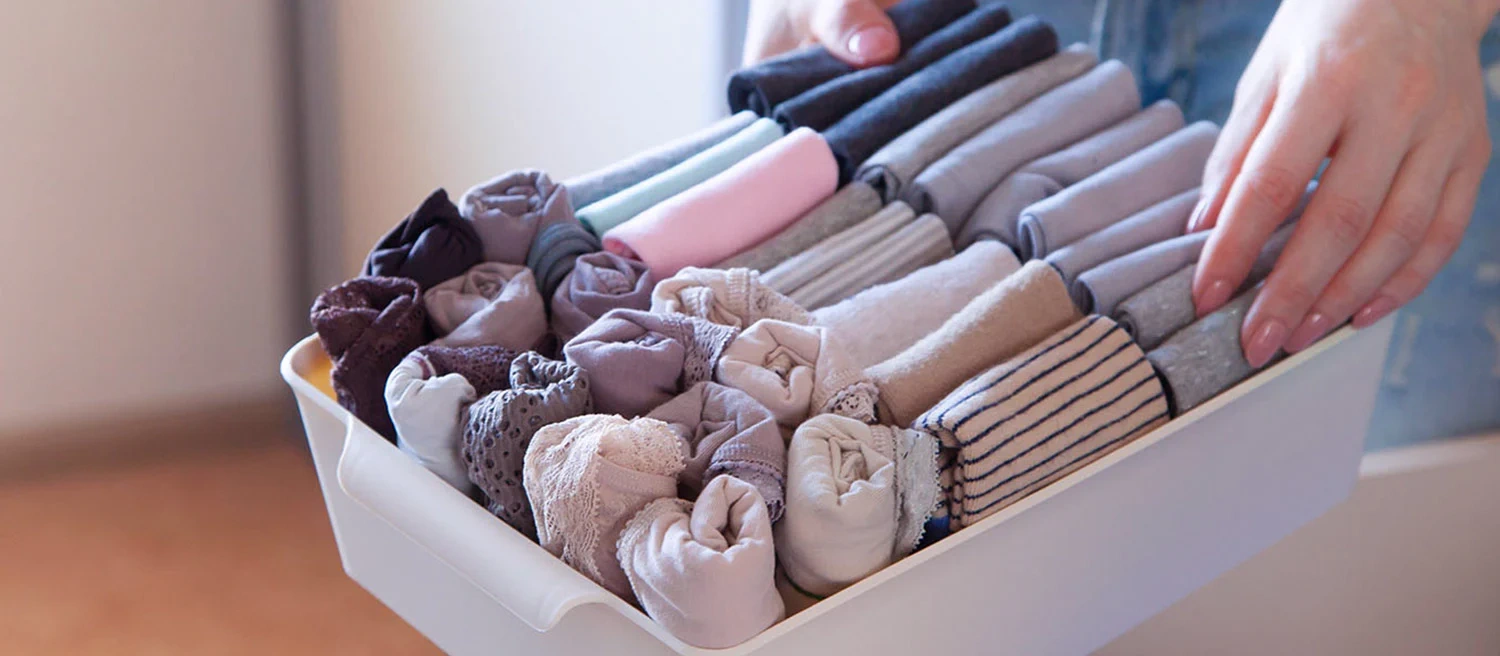Have you ever wondered if your daily underwear habits truly support your health? Good underwear hygiene does more than keep you feeling fresh—it helps prevent skin irritation, infections, and even unpleasant odors. Many people believe common myths, such as the notion that the type or fit of underwear does not matter.
However, making smart choices can improve your comfort and personal hygiene. Take a moment to think about your current routine. Could a few small changes make a big difference for you?
Key Takeaways
Change your underwear daily to prevent bacteria buildup and maintain comfort.
Use gentle, fragrance-free detergents to protect your skin and fabric quality.
Choose breathable fabrics like cotton or bamboo to keep your skin dry and reduce irritation.
Replace old or damaged underwear every 6 to 12 months to avoid health risks.
Follow proper washing and drying techniques to ensure your underwear stays clean and hygienic.
Underwear Hygiene Tips
Keeping your underwear clean and fresh is one of the simplest ways to protect your health and comfort. Good underwear hygiene helps you avoid skin problems, infections, and embarrassing odors.
You might not think about it every day, but small changes in your routine can make a big difference. Friendtex offers high-quality, hygienic underwear options that support your daily needs and help you feel confident all day.
Change Frequency
How often do you change your underwear? You might be surprised by how much this matters. Health experts recommend changing your underwear every day. This habit keeps bacteria and sweat from building up, which lowers your risk of skin irritation and infection.
For men, some dermatologists say you can wear the same pair for up to 48 hours if you must, but daily changes are still best. For women, changing underwear daily is even more important because it helps protect vaginal health and prevents bacterial buildup.
Tip: If you exercise, sweat a lot, or live in a hot climate, you should change your underwear more than once a day.
Here’s why daily changes matter:
Dirty underwear can cause skin irritation and itching.
Bacteria and fungi grow quickly in moist, used underwear.
Wearing the same pair for too long leads to odor and discomfort.
Clean underwear helps you feel fresh and confident.
Daily Habits

Building good daily habits is key to maintaining underwear hygiene. Here are some simple steps you can follow:
Wash After Every Use
Always wash your underwear after wearing it. This removes sweat, bacteria, and dirt that collect during the day.Choose Gentle Detergents
Use mild, fragrance-free detergents. Harsh chemicals can irritate your skin and damage the fabric.Don’t Overcrowd the Washer
Wash underwear in small loads. This helps each piece get thoroughly clean.Dry Properly
Air-dry your underwear or use a low-heat setting in the dryer. High heat can damage elastic and fabric, while damp underwear can let bacteria grow.Store in a Clean, Dry Place
Keep your clean underwear in a dry, well-ventilated drawer or container. This prevents contamination and keeps them fresh.
Note: Unwashed underwear can cause chafing, rashes, and even infections. These are some of the most common underwear mistakes people make.
By following these habits, you lower your risk of skin irritation, bacterial and fungal infections, and body odor. Friendtex’s commitment to quality means you can trust their underwear to support your hygiene routine and keep you comfortable every day.
Fabric and Fit Choices
Natural Fabrics
When you pick underwear, the fabric matters more than you might think. Natural fabrics like cotton, bamboo, and modal help keep you dry and comfortable. Doctors often recommend these materials for their breathability and softness.
Cotton absorbs moisture and lets your skin breathe. Bamboo goes even further, offering 20% more air flow than cotton and soaking up 60% more moisture. It also has natural antimicrobial properties, which means it helps fight bacteria.
Here’s a quick look at how these fabrics compare:
Fabric Type | Benefits | Supporting Studies |
|---|---|---|
Cotton | Breathable, absorbs moisture | European Journal of Obstetrics and Gynecology |
Bamboo | Extra air flow, high moisture absorption, antimicrobial | Studies on bamboo’s moisture handling |
Friendtex uses premium, sustainable fabrics like organic cotton, bamboo, and modal in their underwear. You get comfort and peace of mind, knowing your skin is protected.
Breathable Materials
Breathable underwear keeps you feeling fresh all day. If you choose materials like modal, microfibre, or bamboo, you help your skin stay dry and avoid chafing. These fabrics let air flow freely, which stops sweat from building up. Lightweight materials also reduce friction, so you don’t have to worry about irritation or sores.
Breathable fabrics prevent excessive sweating.
Moisture buildup leads to discomfort, but good materials help you avoid it.
Airy underwear means less risk of skin problems.
Friendtex’s sustainable options, such as MicroModal and TENCEL™, wick away moisture and feel soft against your skin. If you have sensitive skin, these hypoallergenic choices can make a big difference.
Proper Fit
Fit is just as important as fabric. Underwear that’s too tight can cause friction, chafing, and even micro-tears. When moisture gets trapped, bacteria and yeast can grow, raising your risk of infections. Wearing smaller sizes may also increase sweating and irritation. Thongs, if too tight, can transfer bacteria from one area to another.
Tight underwear may trigger symptoms like vulvodynia.
Poor fit can worsen conditions like ingrown hairs or folliculitis.
Friendtex offers customization options, so you can choose the style and fit that works best for you. Their 4-way stretch fabrics move with your body, helping you stay comfortable and hygienic every day.
Keep Underwear Clean

You might think tossing your underwear in the laundry basket is enough, but keeping them truly clean takes a little more care. Good underwear hygiene starts with washing after every use.
Surprisingly, a recent survey found that 45% of Americans wear the same pair for two days or longer, and 13% have worn the same pair for a week or more. If you want to avoid skin irritation and bacteria, you should always wash your underwear after each wear.
Washing Methods
Textile experts agree that the way you wash your underwear matters. You can follow these steps to keep your underwear clean and comfortable:
Sort by Color and Fabric
Separate your underwear before washing. This prevents color bleeding and protects delicate fabrics.Use Mild Detergent
Pick a gentle detergent without harsh chemicals. Strong detergents can weaken fibers and cause skin irritation.Avoid Hot Water
Wash with cold or lukewarm water. Hot water can damage the fabric and elastic.Hand Wash When Possible
Hand washing is gentle and helps your underwear keep its shape and color. If you use a machine, place your underwear in a lingerie bag to protect them.Don’t Overload the Washer
Wash small loads. This lets each piece get fully clean and reduces wear and tear.
Friendtex recommends following these steps to maintain the quality of their premium fabrics. Their underwear is designed to last, but only if you treat them with care.
Tip: Always check the care label on your underwear. Friendtex includes clear instructions so you can keep your garments looking and feeling fresh.
Drying Techniques
Drying your underwear the right way is just as important as washing. Damp underwear creates a perfect environment for yeast and bacteria to grow. You want to make sure your underwear is completely dry before you wear or store it.
Air drying is best. Hang your underwear in a well-ventilated area. This method preserves the fabric and elastic.
If you use a dryer, choose a low-heat setting. High heat can shrink and damage your underwear.
Never wear damp underwear. Moisture can lead to mold, bacteria, and skin problems.
Avoid tumble drying delicate fabrics. This helps your underwear stay clean and last longer.
Friendtex’s quality standards mean their underwear holds up well to proper drying methods. Their fabric care recommendations help you keep your underwear clean and comfortable for longer.
Note: Always let your underwear dry completely before putting them away. This simple habit keeps your drawer clean and your skin healthy.
By following these washing and drying tips, you support your underwear hygiene and keep your underwear clean every day. Friendtex makes it easy to care for your garments, so you can feel confident and fresh.
When to Replace Your Underwear?

You probably don’t think about replacing your underwear until you spot a hole or the elastic feels loose.
But did you know that keeping your underwear fresh is a big part of underwear hygiene? Old or damaged underwear can cause more problems than you might expect. Let’s talk about how you can spot when it’s time for a refresh and why it matters for your health.
Signs to Refresh
You don’t need to wait for your underwear to fall apart before you swap it out for a new pair. Here are some clear signs that your underwear needs replacing:
Odor: If you notice a strong smell even after washing, bacteria may be hiding in the fabric.
Stretched-out elastic: Loose bands won’t hold your underwear in place, which can lead to discomfort.
Holes: Any holes mean the fabric is worn out and can’t protect you properly.
Worn-out fabric: Thin or rough spots can rub against your skin and cause irritation.
Discoloration: Faded colors show that the material has seen better days.
Visible panty lines: If your underwear feels too tight or leaves marks, it’s time for a new size or style.
Experts suggest replacing your underwear every three months to keep things fresh and support a healthy vagina. Some recommend swapping out old pairs every 6 to 12 months, especially if you notice any of these signs. Regular changes help you avoid moisture buildup and keep your skin happy.
Tip: Friendtex offers high-quality, comfortable underwear made from premium fabrics. If you’re ready for a refresh, you’ll find plenty of options to suit your style and needs.
Health Risks
Wearing old or damaged underwear isn’t just uncomfortable—it can affect your health. Here’s what can happen if you hold onto your underwear for too long:
Bacterial infections
Skin irritation and chafing
Persistent odor
Moisture retention
Fungal infections
Reduced comfort and support
Hygiene issues
Itching
Your underwear sits close to your skin all day, picking up sweat, bacteria, and dead skin cells. Even with regular washing, worn fabric can trap contaminants. This can lead to problems like itching, infection, and discomfort.
For women, keeping underwear fresh is especially important for a healthy vagina. Timely replacement helps prevent irritation and supports your overall well-being.
If you want to keep your underwear hygiene on point, pay attention to these signs and risks. Friendtex makes it easy to find new, high-quality underwear that keeps you comfortable and confident.
Special Situations
Workouts
Staying active feels great, but sweaty workouts can make underwear hygiene tricky. You sweat a lot during exercise—sometimes up to a liter per hour! That much moisture can lead to bacteria and odor if you don’t take care. Here’s how you can keep things fresh and healthy:
Always start with clean, freshly washed underwear.
Pick fast-drying, moisture-wicking fabrics like MicroModal or bamboo. These pull sweat away from your skin and dry quickly.
Choose tight-fitting shorts or leggings to cut down on friction and chafing.
Look for seamless underwear to prevent irritation around the groin.
Change out of sweaty clothes right after your workout.
Wash your workout underwear after every session.
Take a shower as soon as you can, or use antibacterial wipes if you’re in a hurry.
Tip: Friendtex offers seamless, moisture-wicking underwear made from advanced fabrics like MicroModal and bamboo—perfect for your most intense workouts.
Nighttime
You might not think much about underwear hygiene while you sleep, but your choices at night matter. Clean, breathable underwear helps your skin rest and recover. Here’s what you can do:
Change into a fresh pair before bed.
In hot weather, consider changing twice a day for extra comfort.
Pick underwear made from breathable, moisture-wicking fabrics like cotton or modal.
Wash your underwear in hot water to kill bacteria.
Sleeping in clean, comfortable underwear helps you wake up feeling fresh. Friendtex’s soft, natural-fiber options are gentle on your skin and let you sleep easy.
Sensitive Skin
If you have sensitive skin, you know how uncomfortable the wrong underwear can feel. The right materials and design make a big difference. Check out this quick guide:
Material Type | Effect on Sensitive Skin |
|---|---|
Natural Fibers | Gentle, breathable, less irritation |
Synthetic Materials | May cause discomfort or trap heat |
Dyes/Treatments | Can worsen skin issues; undyed is safer |
Elastics/Seams | Look for tag-free, flat seams to avoid chafing |
Choose natural fibers like cotton or modal for softness and breathability.
Go for seamless and tagless designs to reduce friction.
Moisture-wicking fabrics keep you dry and comfortable.
Friendtex offers hypoallergenic, premium cotton and MicroModal underwear with flat seams and tagless options—great for sensitive skin.
Note: The right underwear can help you avoid itching, redness, and irritation. Friendtex’s range covers every need, so you can find your perfect fit for any situation.
Conclusion
You can make underwear hygiene part of your daily routine with a few simple steps:
Change your underwear every day to stay fresh.
Air dry after washing to cut down on bacteria.
Skip fabric softeners so your underwear stays breathable.
Replace worn pairs for better comfort.
Pick the right fit to avoid moisture buildup.
Setting reminders, like phone alarms or notes in your bathroom, helps you stick to these habits. When you keep up with good hygiene, you lower your risk of skin irritation and infections. Want to share your own tips or routines? Drop your ideas in the comments and help others stay healthy and comfortable, too!
FAQ
How often should you change your underwear?
You should change your underwear every day. If you sweat a lot or exercise, swap it out more often. Fresh underwear helps you stay clean and comfortable.
What is the best fabric for sensitive skin?
Natural fabrics like cotton, bamboo, or modal work best. These materials feel soft and let your skin breathe.
Tip: Look for tagless and seamless designs to avoid irritation.
Can you wash underwear with other clothes?
Yes, you can. Just use a gentle detergent and avoid overcrowding the washer.
Wash in cold or lukewarm water
Use a lingerie bag for delicate pieces
When should you replace your underwear?
Replace your underwear if you see holes, stretched elastic, or lingering odors.
Experts suggest swapping old pairs every 6 to 12 months for better hygiene.


